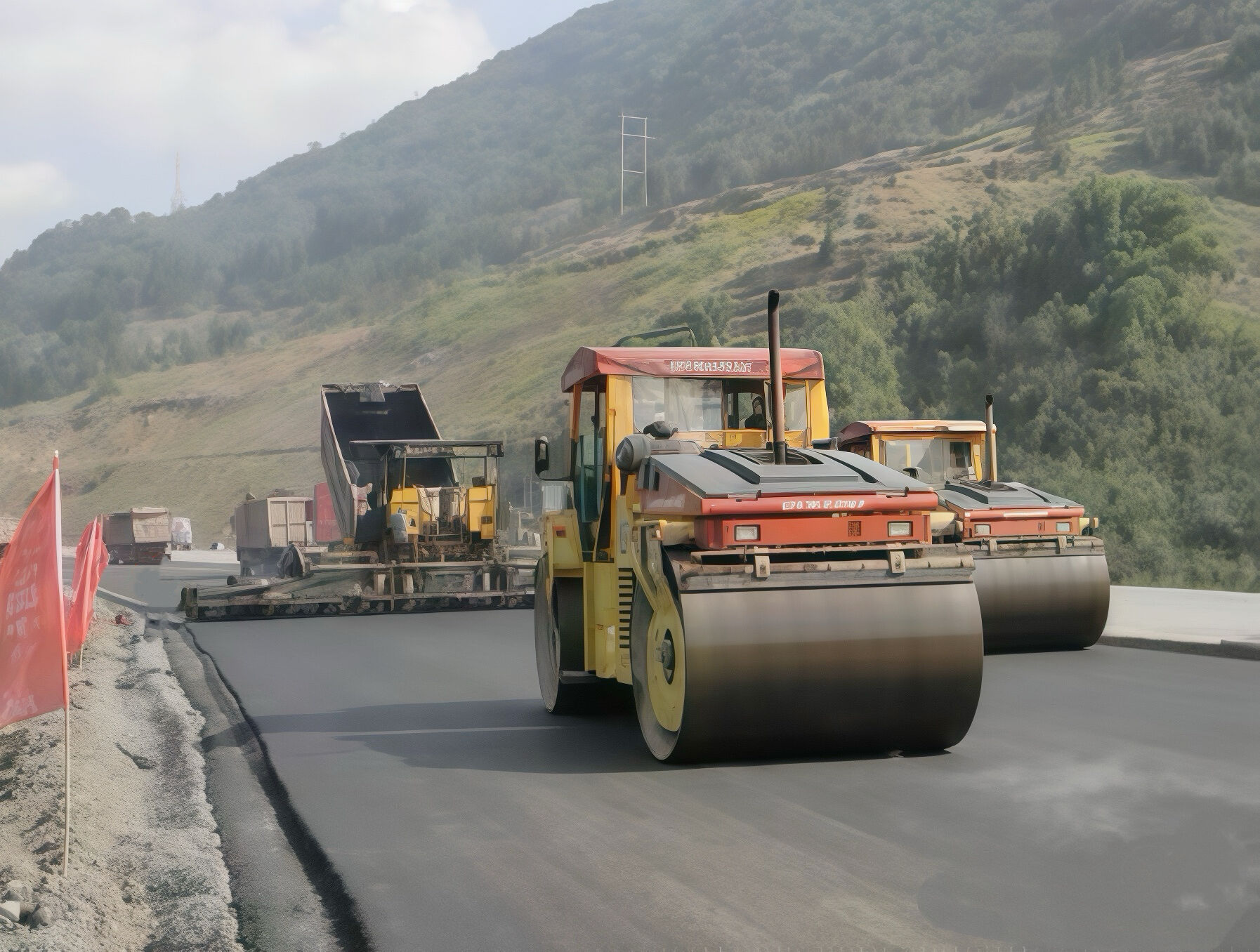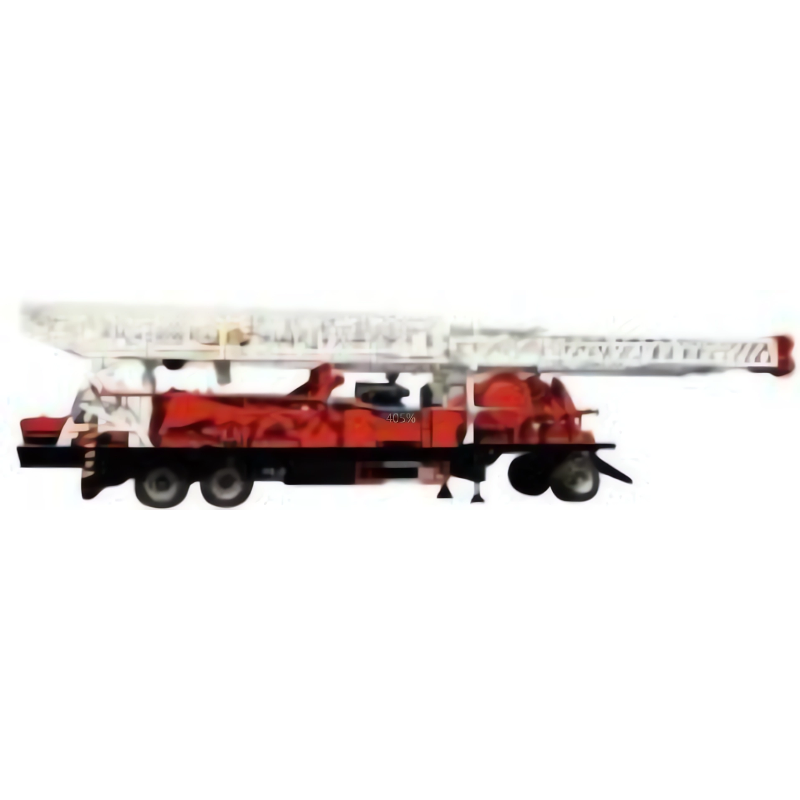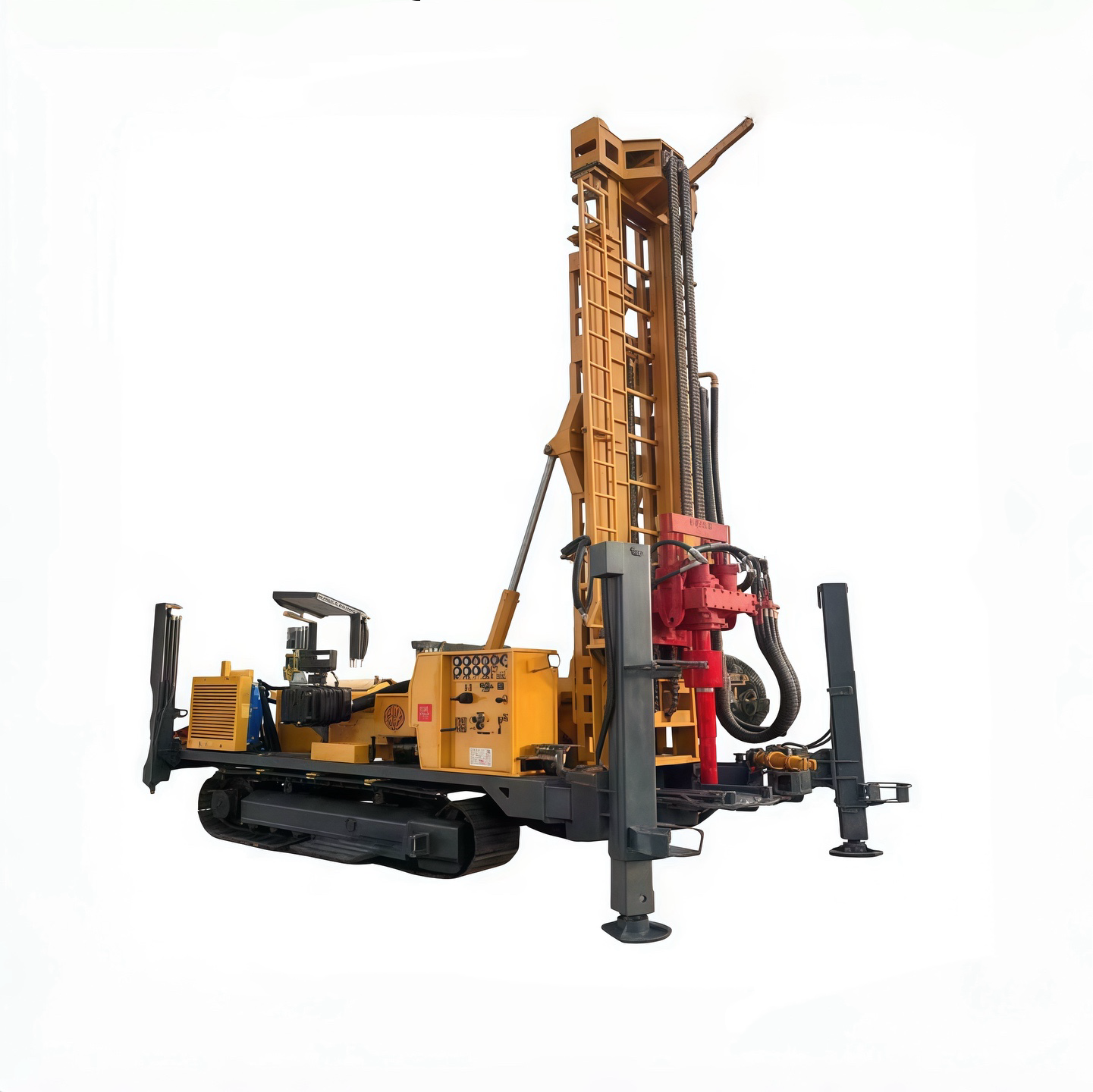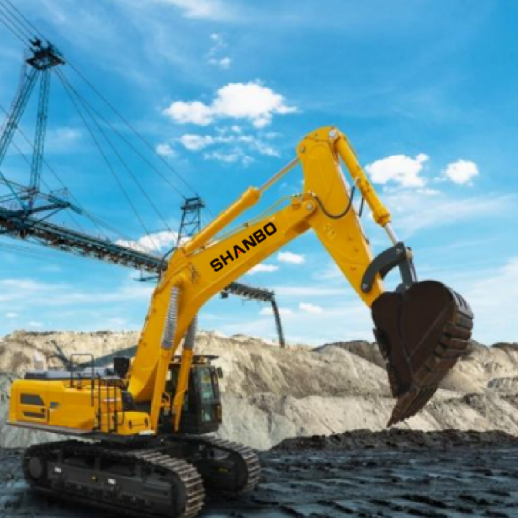A Comprehensive Guide to Different Types of Construction Equipment
Earth-Moving Equipment: Backbone of Construction Projects
Bulldozers: Versatile Powerhouses for Site Preparation
Bulldozers are indispensable in the construction industry, primarily due to their capacity for efficient site preparation. These machines are adept at land clearing, grading, and moving debris, displaying a remarkable adaptability that makes them essential on any construction site.
Bulldozers can push an incredible amount of dirt around, sometimes moving well over 20 tons in a single pass. This makes them invaluable when contractors need to get big jobs done quickly. As cities continue growing and expanding, we're seeing a real spike in demand for these heavy hitters. Construction activity across the country has picked up pace dramatically, and with it comes a steady increase in bulldozer usage. The market for these machines is actually growing at about 5% per year now, which shows just how essential they remain for building roads, housing developments, and other infrastructure projects that keep our communities running smoothly.
Excavators: Precision in Digging and Demolition
Excavators are at the forefront of construction technology, offering unmatched precision in tasks ranging from excavation to demolition. The versatility of these machines is largely due to their ability to support multiple attachments, enhancing their efficiency in digging, drilling, and breaking operations.
Recent tech upgrades have made excavators much better at what they do, especially with those new hydraulic systems that let them dig more accurately than ever before. Some tests show these machines can actually improve digging accuracy by around 30%, which makes a big difference on job sites. Better precision means higher quality work overall while saving both time and money on labor expenses. Looking ahead, the excavator market seems pretty strong too. Industry analysts are talking about a growth rate somewhere around 6 or 7 percent each year between now and 2028. That kind of steady increase shows just how essential these machines have become across construction projects worldwide.
Motor Graders: Achieving Perfect Surface Leveling
Motor graders play a key role when it comes to getting surfaces just right, something that matters a lot during road building projects. What makes these machines stand out is their long blade design, allowing operators to grade materials like gravel and asphalt with remarkable accuracy, sometimes within half a centimeter or so. Getting this kind of precision right really counts because roads need to last through all sorts of weather conditions while keeping drivers safe on them day after day.
To maintain their efficiency, regular maintenance and blade adjustments are necessary, which can reduce operational downtime by as much as 15%. For projects where precise grading is mandatory, motor graders are an irreplaceable asset, ensuring that surfaces are uniformly leveled and ready for further construction activities.
Road Construction Machinery: Building Durable Infrastructure
Road Rollers: Compaction for Long-Lasting Pavement
Road rollers are indispensable in pavement construction, providing essential compaction to soil and asphalt that fortifies the structural integrity and extends the lifespan of road surfaces. The key to their effectiveness lies in their ability to decrease the voids in the materials, which enhances their stability and strength.
The numbers don't lie - roads that get proper compaction during construction see maintenance costs drop around 40% throughout their lifespan, which means big money saved down the road. Contractors have several options at their disposal for getting this job done right. Vibratory rollers shake things loose while static models rely on sheer weight to do the work. Choosing between them depends largely on what kind of job needs doing. A gravel road in rural area might need something different than urban asphalt projects where space is tight and traffic waits impatiently.
Road Grader Maintenance Tips for Optimal Performance
Keeping road graders well maintained makes all the difference when it comes to how they perform day after day and just how long they last overall. Checking those fluid levels regularly and making sure the blade stays properly adjusted really helps extend the life of these heavy machines. When operators stick to a regular maintenance routine, something around 25 percent fewer breakdowns happen unexpectedly. That means construction projects don't get held up as much, saving money in the long run instead of facing expensive delays down the road.
Moreover, daily inspections before operation are key in identifying potential issues that could impair efficient performance, allowing for timely repairs and preventing further damage. These practices contribute to smoother operations and maintain the performance quality expected in construction projects.
Asphalt Pavers: Ensuring Smooth Road Surfaces
Asphalt pavers play a key role in building roads, making it possible to lay down asphalt efficiently and create smooth surfaces without gaps or bumps. Today's machines come with automatic grade control systems these days, something that really makes a difference when it comes to getting consistent results across the entire pavement layer. What this means practically is that workers don't have to worry about uneven patches forming during the process. The end result? Roads that feel much smoother under car tires and last longer before needing repairs, which saves money for municipalities in the long run.
Statistical analyses have shown that roads constructed using advanced asphalt paving technology not only provide a smoother ride for motorists but also contribute to reduced vehicle maintenance costs. This underscores the importance of employing technologically advanced asphalt pavers in modern infrastructure development.

Material Handling Solutions: Efficient Load Management
Wheel Loaders: Multitasking Material Movers
Construction sites simply can't operate without wheel loaders these days. These versatile machines handle everything from dirt and gravel to demolition debris, making them workhorses on any job site. They move tons of material around quickly, which keeps projects moving forward instead of getting stuck waiting for stuff to be moved manually. Industry reports point to a 7 percent jump in wheel loader demand lately, and it makes sense when looking at how much they can haul compared to other options. Contractors love them because they cut down on labor costs while still getting the job done right, even with those awkwardly shaped loads that just won't fit anywhere else.
To ensure optimal performance, it is crucial for operators to evaluate specific loader attributes, such as bucket size and lift capacity, and align these features with the specific requirements of each project.
Telehandlers: Combining Reach and Precision
Telehandlers are designed for tasks requiring extended reach and precise load positions, making them indispensable in construction scenarios involving height and distance. With the capability to lift materials weighing up to 5,000 lbs, telehandlers are well-suited for managing heavy loads across various job sites.
Furthermore, the adaptability of telehandlers can be significantly enhanced by utilizing different attachments, such as forks or buckets, thereby expanding their application range from construction to agriculture. These features highlight telehandlers as versatile tools that prioritize both reach and precision in diverse task environments.
Conveyor Systems for Bulk Material Transport
Conveyor systems revolutionize the transportation of bulk materials, facilitating efficient movement across diverse distances and streamlining construction workflows. By adopting conveyor belts, companies can significantly cut manual labor costs, with reductions estimated at around 30%. This not only decreases expenses but also ensures quicker project completion times.
To achieve long-term success and operational effectiveness, careful attention must be given to the customization and maintenance of these systems, focusing on how well they integrate with existing processes and infrastructure.
Drilling and Foundation Equipment: Creating Stable Bases
Well Drilling Rigs: Accessing Subsurface Resources
Well drilling rigs are critical tools for accessing subsurface resources such as fresh water and oil, which are essential for economic development and resource management. These rigs are capable of drilling to depths exceeding 10,000 feet, thanks to innovative technologies that enhance both speed and efficiency in drilling operations.
Water shortages are becoming increasingly severe worldwide, and this has led to rising interest in new well drilling equipment according to recent industry reports. The surge in demand comes from multiple directions actually. On one hand there's the basic human need for fresh drinking water, especially in arid regions where traditional sources are disappearing fast. But there's another angle too - energy companies are looking at these same drilling technologies for exploring underground oil reserves. So basically, these rigs serve dual purposes across two vital industries that impact everyday life for millions of people around the planet.
Borehole Drilling Machines: Key Considerations Before Purchase
Purchasing a borehole drilling machine is a significant investment and requires careful evaluation of several factors to ensure the equipment meets project needs. Key considerations include assessing the desired bore diameter and depth capabilities, taking into account the specific requirements of the intended projects.
Additionally, potential buyers must examine the manufacturer's reputation, warranty offerings, and the availability of technical support to avoid future complications. Shanbo offers a wide range of high-performance drilling rigs to meet a variety of operational needs.
Pile Drivers: Ensuring Structural Integrity
Pile drivers play a crucial role in construction by providing deep foundation solutions, which are vital for enhancing the stability and safety of structures. The effectiveness of pile driving significantly reduces settling issues, leading to improved long-term structural integrity by as much as 30%.
Investing in modern pile drivers not only ensures compliance with current safety regulations but also reduces liability risks associated with engineering projects. These benefits make pile drivers a fundamental piece of equipment for any construction endeavor focused on sustainability and regulatory adherence.
Compaction Equipment: Ensuring Ground Stability
Vibratory Rollers: Soil Compaction Techniques
Vibratory rollers use a combination of static and dynamic forces to achieve optimal soil compaction levels in construction projects. This equipment is essential in enhancing the load-bearing capacity of soil, with expert research indicating that proper compaction techniques can increase load-bearing capacity by 25%, thus preventing future structural failures.
Regular training for operators is crucial to ensure adherence to best practices, which enhances the safety and efficiency of construction projects. Training also equips operators with the skills needed to implement the advanced techniques offered by modern vibratory rollers.
Plate Compactors for Confined Spaces
Plate compactors are intended for use in small, confined spaces where larger machinery cannot operate effectively, making them essential for many residential projects. These compact machines are notable for their portability and typically weigh between 100 to 250 lbs, allowing them to be easily maneuvered in tight spaces.
Ensuring proper maintenance and handling of plate compactors can significantly improve their lifespan. This proactive care can reduce long-term costs for construction companies, providing a sound financial strategy while ensuring efficient operation in various construction scenarios.
Choosing Between Smooth vs. Padfoot Rollers
Understanding the difference between smooth and padfoot rollers is critical for selecting the right equipment to enhance project effectiveness. Smooth rollers are ideal for asphalt compaction due to their ability to create a smooth surface, while padfoot rollers excel in cohesive soil conditions due to their unique design.
Getting input from engineering staff really helps when picking the right roller for maximum compaction efficiency depending on what kind of soil we're dealing with. Research indicates that matching rollers to specific soil conditions boosts compaction rates around 40 percent or so, which makes a big difference in how long projects take and whether they meet quality standards. Most contractors find this matters a lot in real world applications where time and money are always tight.
Specialized Construction Tools: Niche Applications
Trenchers: Efficient Pipeline Installation
Trenchers play a vital role in getting pipelines installed quickly because they're built specifically for digging those long trenches needed for utilities. These machines can put down pipes at a much faster rate than manual methods, which is why contractors rely on them heavily when deadlines loom large. With newer technologies incorporated into modern trenchers, operators find that less soil gets moved around during excavation work. This means less mess at construction sites and fewer headaches trying to restore landscapes after the job is done.
Using trenchers can streamline construction schedules, cutting installation time in half compared to manual labor. This efficiency not only boosts productivity but also reduces costs significantly, making trenchers a valuable investment for construction companies aiming to optimize their workflows.
Demolition Robots: Safe Structural Breakdown
Demolition robots revolutionize the approach to safe and efficient structural breakdown work. By significantly reducing the risks associated with manual demolition, these robots enhance safety on construction sites. Equipped with various advanced tools such as hydraulic hammers and concrete crushers, demolition robots can handle complex tasks with remarkable precision.
Industry experts have noted that the use of demolition robots leads to a 30% reduction in labor costs while ensuring worker safety. This transformative technology not only speeds up demolition processes but also mitigates the challenges of handling hazardous materials, reinforcing its value in modern construction settings.
Horizontal Directional Drilling Machines
Horizontal Directional Drilling (HDD) machines play a crucial role in the installation of underground utilities, minimizing surface disruption—a critical factor in modern construction. These machines offer precision placement of pipes and cables, ensuring infrastructure projects meet the evolving demands of urban environments.
The HDD method is particularly favored for its reduced environmental impact, a significant advantage in city areas where traditional methods may cause disruptions. Not only do these machines preserve above-ground landscapes, they also align with sustainable construction practices, marking them as essential equipment for forward-thinking infrastructure projects.
Equipment Acquisition Strategies
Buying vs. Renting Construction Machinery
Contractors often find themselves stuck trying to figure out whether to buy or rent construction equipment. There are so many things to consider financially, how long the job will last, and how often they'll actually need to use whatever machine they get their hands on. Renting gives companies a lot more wiggle room, especially when working on those quick jobs that don't justify owning expensive gear. Plus, rental options let businesses try out newer machines without spending a fortune upfront just to store them somewhere after the project wraps up.
On the other hand, purchasing equipment could prove more cost-effective over the long term for companies with ongoing or frequent project needs. An industry survey highlights that approximately 40% of contractors prefer renting equipment, primarily due to the rapid advancements in construction technology, which can quickly render purchased equipment obsolete.
Evaluating Bulldozer Specifications for Project Needs
Picking out the correct bulldozer for construction work goes beyond simply looking at size. Contractors need to check things like engine power, machine weight categories, and how wide the blade actually is. Getting these details right matters because they直接影响 the job's success depending on what needs to be done. According to field reports from equipment experts, when operators get the specs right for their particular site conditions, productivity often jumps around 30-35%. That makes all the difference on tight deadlines or budget constrained projects where every hour counts.
Thus, consulting with experts is indispensable, as their insights can lead to informed decisions that significantly improve overall project outcomes. By aligning equipment capabilities with project demands, contractors are more likely to achieve optimal efficiency and cost-effectiveness.
Understanding Drilling Rig Machine Capabilities
Knowing what drilling rig machines can actually do makes all the difference when planning projects. Take a look at those key specs like how deep they go and their pressure limits these numbers tell us exactly what kind of jobs each machine is suited for. When companies get this part wrong, they often end up renting bigger or better equipment than needed just because they didn't understand what their current gear could handle. And guess what happens? Project budgets start climbing fast sometimes even going up around 20% or more without anyone really noticing until it's too late.
To avoid such inefficiencies, collaborating with specialists during the acquisition phase is crucial. Their expertise ensures that the selected drilling equipment aligns perfectly with the unique demands of the project, thus optimizing operational effectiveness and safeguarding financial investments.
Conclusion
Getting around in the construction equipment space requires some smart thinking when it comes to acquiring gear. The decision between buying versus renting isn't straightforward at all. Each choice brings different pros and cons depending on how much money is available, how long the job will last, and just how often certain machines need to be used. Take bulldozers for instance they come in various sizes and power levels that matter a lot depending on what kind of terrain needs moving. Drilling rigs are another story entirely with their own set of specs that determine depth capabilities and speed. When contractors actually take time to understand these details about their equipment options, projects tend to run smoother overall while saving quite a bit of cash in the process too.
Collaborating with industry experts, such as Shanbo, during the selection process is often beneficial, leading to more informed decisions and better project outcomes. By considering these factors, construction professionals can enhance their operational effectiveness and cost management.
Recommended Products
 Hot News
Hot News
-
“Water Savior” 200 m Reverse Circulation Water Well Drills Arrive in Uzbekistan
2025-03-28
-
Bulldozer Transport Guide: Best Practices, Safety Tips, and Cost Factors
2025-12-15
-
A Complete Guide to Construction Equipment Shipping: Methods, Costs, and Tips
2025-12-12
-
How Bulldozer Work Gets Done: Key Tasks, Techniques, and Applications
2025-12-11
-
Exploring the Capabilities of the Biggest Excavator in the World
2025-12-10
-
Essential Bulldozer Equipment: Components, Attachments, and Uses
2025-12-09












